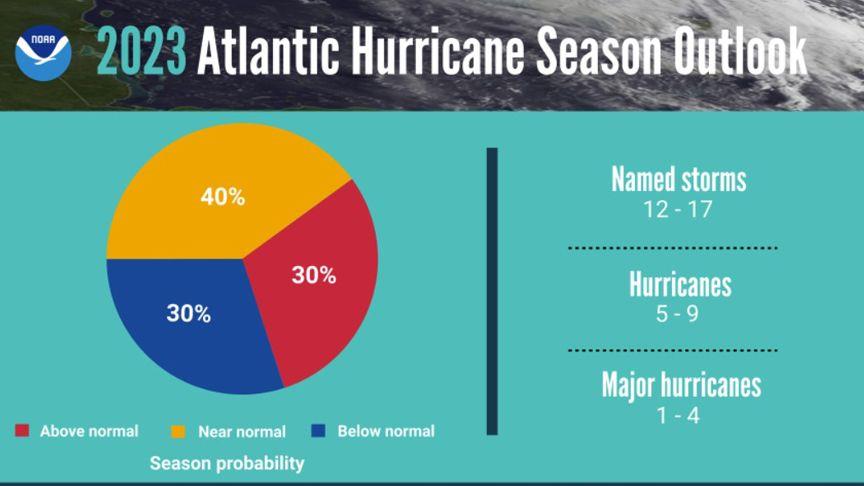As of June 1, hurricane season is upon us. Almost without exception, we get the tail, shoulder or rump of one or two of the dozen or so that form up in the Atlantic between the Caribbean and Africa and bring so much destruction and misery with them as they thunder west and north…
Many of us live on an island. And now an “average” season is worse than ever. This column is about that.
NOAA predicts a near-normal 2023 Atlantic Hurricane Season
NOAA forecasters with the Climate Prediction Center, a division of the National Weather Service, predict near-normal hurricane activity in the Atlantic this year. NOAA’s outlook for the 2023 Atlantic hurricane season, which goes from June 1 to November 30, predicts a 40% chance of a near-normal season, a 30% chance of an above-normal season and a 30% chance of a below-normal season.
 |
| File Photo |
“Major hurricanes” are defined as Category 3, 4 or 5 based on the Saffir-Simpson Hurricane Wind Scale (see table below.) Hurricanes that fall in these categories have sustained winds above 111 miles per hour, which can cause catastrophic damage that could result in power outages and leave residential areas uninhabitable for several days to months.
Categories of Hurricanes
We’ve all heard the weather reporter state that “Hurricane ‘x’ is now a Category 3 hurricane and headed for ________.” What does that mean?
Want to put some names on the numbers?
Irene, 1999, CAT-1
Sandy, 2012, CAT-1
Floyd, 1999, CAT-2
Georges, 1998, CAT-2
Betsy, 1965, CAT-3
 |
| File Photo |
Hugo, 1989, CAT-4
Andrew, 1992, CAT-5
Katrina, 2005, CAT-5
Dorian, 2019, CAT-5
USCG hurricane aircraft reported Andrew, Katrina and Dorian had generated winds over 200mph at various times of the storms. Another term for CAT-5’s is “Wrath of God.”
When looking at CAT-5s’, no one is saying that there is no difference between a storm that brings 160-mile-per-hour winds and one that reaches 190. The force of the wind goes up with the square of the velocity. In layman’s terms, that means a hurricane with 200-mile-per-hour winds has four times — not just double — the force of one with 100-mile-per-hour winds.
The official hurricane season runs from June 1 through Nov. 30, but storms can form before and after.
We’ll write more about this in the weeks ahead.
BTW, if you are interested in being part of USCG Forces, email me at joinuscgaux@aol.com or go directly to the US Coast Guard Auxiliary “Flotilla Finder” at http://www.cgaux.org/units.php and we will help you “get in this thing . . .”
